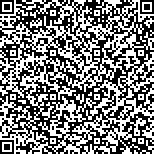| 引用本文: | 余丽,朱广伟,孔繁翔,李胜男,史小丽,张民,阳振,许海,朱梦圆.巢湖微囊藻毒素异构体组成的时空分布特征及影响因子.湖泊科学,2019,31(3):700-713. DOI:10.18307/2019.0309 |
| YU Li,ZHU Guangwei,KONG Fanxiang,LI Shengnan,SHI Xiaoli,ZHANG Min,YANG Zhen,XU Hai,ZHU Mengyuan.Spatiotemporal characteristics of microcystin variants composition and associations with environmental parameters in Lake Chaohu, China. J. Lake Sci.2019,31(3):700-713. DOI:10.18307/2019.0309 |
|
| |
|
|
| 本文已被:浏览 5585次 下载 2055次 |

码上扫一扫! |
|
|
| 巢湖微囊藻毒素异构体组成的时空分布特征及影响因子 |
|
余丽1, 朱广伟1, 孔繁翔1, 李胜男2, 史小丽1, 张民1, 阳振1, 许海1, 朱梦圆1
|
|
1.中国科学院南京地理与湖泊研究所, 湖泊与环境国家重点实验室, 南京 210008;2.湖南省农业科学院, 湖南省农业环境生态研究所, 长沙 410125
|
|
| 摘要: |
| 有害蓝藻释放微囊藻毒素(MCs),严重威胁饮用水源地用水安全.为了解巢湖MCs污染状况及其异构体组成对水质的影响,于2012年夏季(8月)和秋季(11月),2013年冬季(2月)和春季(5月)进行采样分析,研究了巢湖水体中胞内微囊藻毒素(IMCs)和胞外微囊藻毒素(EMCs)异构体的时空分布及其与环境因子的关系.结果发现,IMCs和EMCs的平均浓度变化范围分别为0.12~6.45 μg/L和0.69~1.92 μg/L.在3种常见的异构体中,MC-RR和MC-LR比例较高,MC-YR最低,MC-RR和MC-LR是巢湖水体中MCs的主要异构体类型.IMCs和EMCs的异构体浓度及其比例呈现不同的时空分布特征.微囊藻生物量、水温、总磷浓度是影响IMCs和EMCs异构体浓度及其组成变化的关键环境因子.本研究表明巢湖富营养化严重的西湖区夏季能合成更多的MC-RR异构体,而秋、冬季节偏向于释放生理毒性更强的MC-LR异构体.了解MCs异构体组成变化及其关键影响因素,有助于预测预警水体MCs污染状况和评估饮用水源地MCs风险. |
| 关键词: 微囊藻毒素 异构体 时空分布 巢湖 |
| DOI:10.18307/2019.0309 |
| 分类号: |
| 基金项目:国家自然科学基金项目(41601203,41671494,31800388)、国家水体污染控制与治理科技重大专项(2017ZX07203001)、中国科学院前沿科学重点研究项目(QYZDJ-SSW-DQC008)和中国科学院南京地理与湖泊研究所“一三五”战略发展规划项目(NIGLAS2017GH04)联合资助. |
|
| Spatiotemporal characteristics of microcystin variants composition and associations with environmental parameters in Lake Chaohu, China |
|
YU Li1, ZHU Guangwei1, KONG Fanxiang1, LI Shengnan2, SHI Xiaoli1, ZHANG Min1, YANG Zhen1, XU Hai1, ZHU Mengyuan1
|
|
1.State Key Laboratory of Lake Science and Environment, Nanjing Institute of Geography and Limnology, Chinese Academy of Sciences, Nanjing 210008, P.R.China;2.Hunan Academy of Agricultural Sciences, Hunan Institute of Agricultural Environment and Ecology, Changsha 410125, P.R.China
|
| Abstract: |
| The harmful cyanobacteria pose a serious threat to the safety of drinking water sources because of their ability to release microcystins (MCs). To illuminate the status of MCs contamination and the effect of its variants composition on water quality in Lake Chaohu, the temporal and spatial distribution of intracellular microcystins (IMCs) and extracellular microcystins (EMCs) and main environmental factors in this lake were examined in summer (August) and autumn (November) of 2012, winter (February) and spring (May) of 2013, respectively. The results showed that the average concentrations of IMCs and EMCs varied from 0.12 to 6.45 μg/L and from 0.69 to 1.92 μg/L, respectively. Among the three common variants, the proportions of MC-LR and MC-RR to total MCs were higher, and the MC-YR was the lowest. MC-RR and MC-LR were the major MCs variants in Lake Chaohu. The concentration and proportion of IMCs and EMCs variants showed different temporal and spatial distribution characteristics. Statistical analysis showed that Microsystis biomass, water temperature, total phosphorus were the key environmental factors affecting the variation in concentration and composition of different MCs variants. This study highlight the fact that the more MC-RR variant can be synthesized in the western Lake with high eutrophication in summer, while more toxic MC-LR variant was released into water in autumn and winter. Understanding the changes of MCs variants composition and its key factors can help to predict the contaminative status of MCs and assess the risk of MCs in drinking water sources. |
| Key words: Microcystins variants temporal and spatial distribution Lake Chaohu |
|
|
|
|